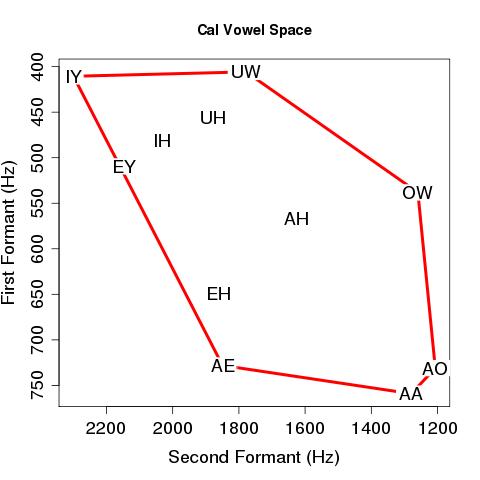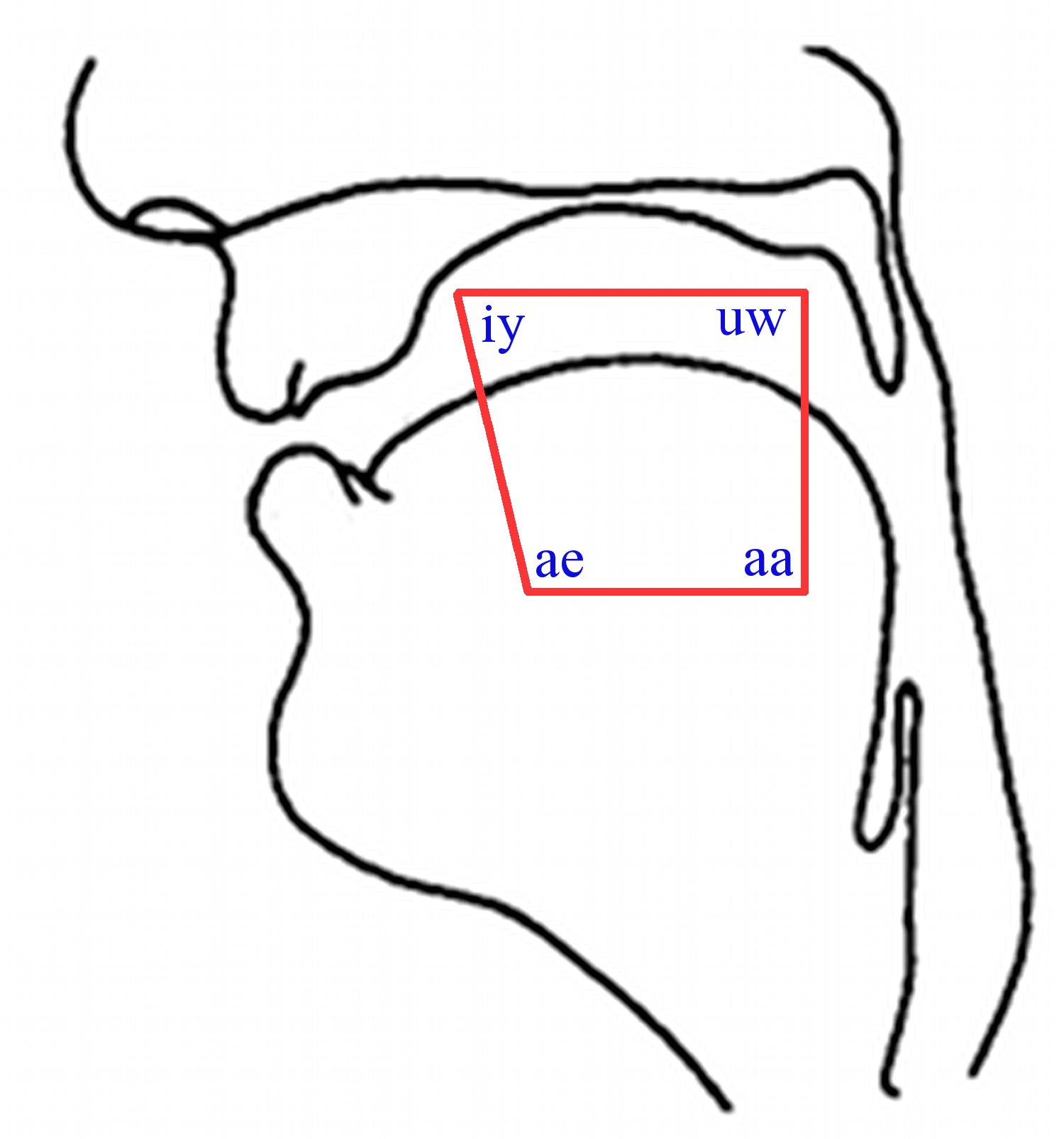Cal vowels!
Linguists are interested in vowels because dialects vary quite a lot in their vowel pronunciation. This page displays acoustic measurements that serve as a rough estimate of tongue position during selected vowel sounds.The figure on the right shows a text book image of some typical acoustic measurements for the vowels in "she", "who", "odd", and "rack" (symbolized here with the symbols "iy", "uw", "aa" and "ae" respectively), overlaid on an x-ray tracing of a vocal tract. Click this image and a slide show of participants' vowel spaces will load.
Our measurement of the Cal vowel space is shown on the left. The differences between the measured vowels and the text-book image are interesting, but the automated analysis method (see "more about the methodology" below) has a number of steps where error can come in. As we correct such errors and aggregate data over many people, an accurate picture of the Cal vowel space begins to emerge.


Guide to the vowel symbols
| IY | – | she, greasy, year, wheel | IH | – | it, did, in, is, six | |
| EY | – | eight | EH | – | ten, eleven, said, red | |
| AE | – | hand, stand, had, hat, rack | AA | – | odd, Don, wash, water, all | |
| AO | – | Dawn, awed, awkward | AH | – | plus, Judd, such, mud, one | |
| OW | – | hold, pose, spokes, no | UH | – | should, your | |
| UW | – | two, suit, you, boon, who |
More about the methodology
- The audio files you submitted were first passed to a "forced alignment" program which used a speech recognizer to find the words that we asked you to say, and in each of the words marked off intervals of time that corresponded to the pronunciation of the different consonants and vowels in the words.
- Then for each vowel in each sentence a "formant tracking" program found the resonant frequencies of the vocal tract - considering the vocal tract as a resonant tube sort of like a flute (many thanks to Akira Watanabe and Yuichi Ueda, Kumamoto Univ., for sharing their formant tracking software with us!).
- The medians of the two lowest vocal tract resonances for each vowel category were then plotted in the figure you see on this page.
Watanabe, Akira (2001) Formant estimation method using inverse filter control. IEEE Transactions on Speech and Audio Processing 9(4), 317-26.
Ueda, Yuichi; Hamakawa, Tomoya; Sakata, Tadashi; Hario, Syota Hario; Watanabe, Akira (2007) A real-time formant tracker based on the inverse filter control method, Acoustical Science and Technology of the Acoustical Science of Japan 28(4), 271-4
